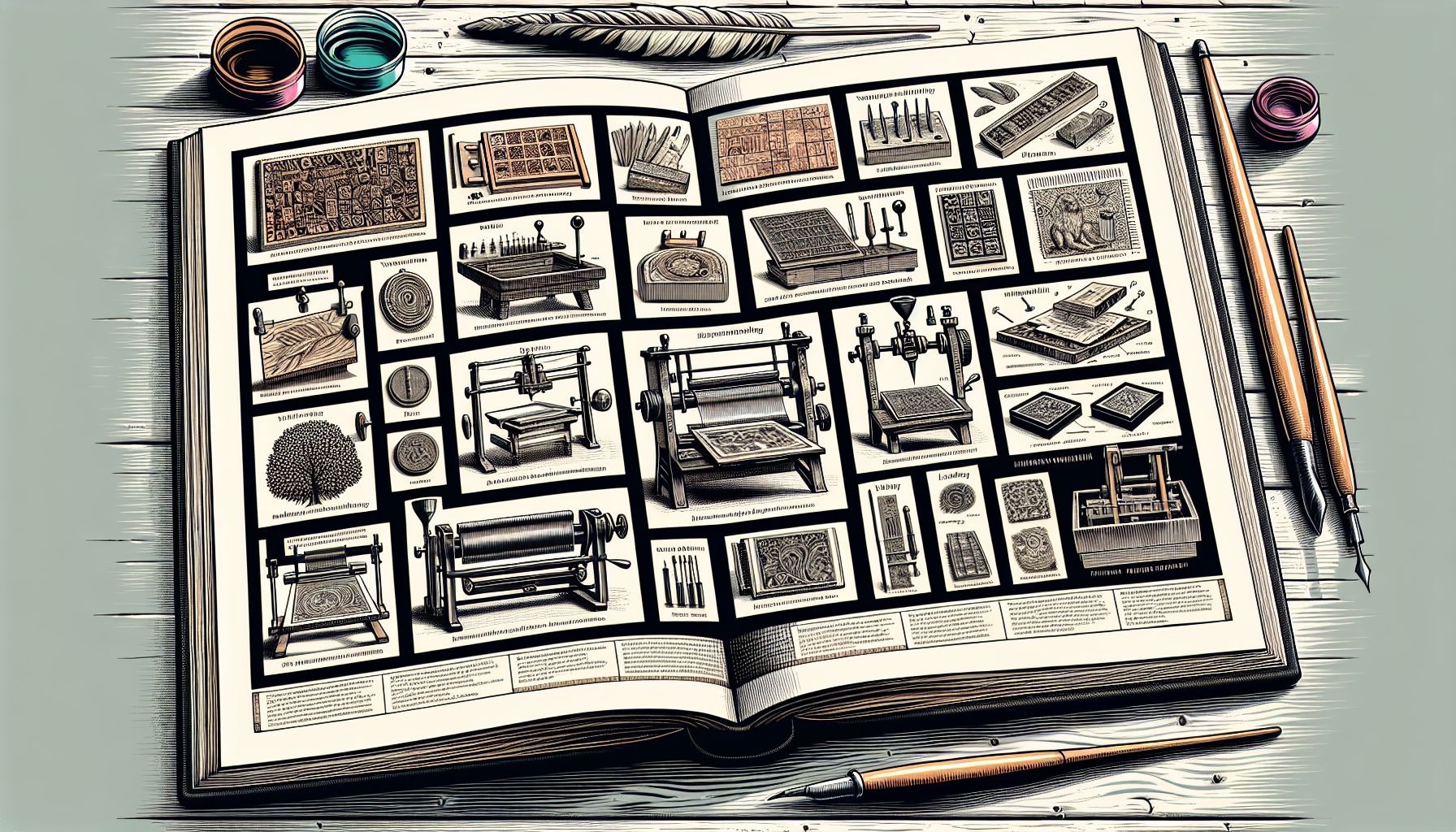A Comprehensive Guide to Printing Techniques
Printing techniques have been around for centuries, starting with traditional methods like woodblock printing and evolving into modern digital printing technologies. The advancements in printing techniques have transformed the way we communicate and share information. Whether you are a business owner, a graphic designer, or simply someone interested in the world of print, understanding the different printing techniques can help you make informed decisions and create impressive visual experiences. In this guide, we will walk you through the various printing techniques, their applications, and key considerations when choosing the right method for your project.
I. Introduction to Printing Techniques
Printing techniques are a collection of processes used to reproduce images and text on various materials. These methods can enhance the visual appeal of anything from business cards and banners to book covers and packaging. While there are numerous printing techniques available today, each with its unique features and applications, some of the most commonly used techniques include:
1. Offset Printing
Offset printing, also known as lithography, is a widely used technique for producing high-quality prints in large quantities. It involves transferring the inked image from a metal plate to a rubber blanket and then onto the final substrate. Offset printing is known for its exceptional color reproduction, making it ideal for magazines, catalogs, and packaging materials.
2. Digital Printing
Digital printing has revolutionized the printing industry by allowing for shorter print runs and personalized prints. This technique involves transferring digital files directly onto the substrate, omitting the need for plates. Digital printing is cost-effective for small quantities, offers quick turnaround times, and is suitable for personalization and variable data printing.
3. Screen Printing
Screen printing, also known as silk screening, involves forcing ink through a fine mesh screen using a squeegee to create a desired image. It is commonly used for apparel printing, posters, and promotional items. Screen printing provides vibrant colors and excellent durability, making it popular for bold designs with rich details.
4. Flexography
Flexography, often used for packaging materials and labels, utilizes flexible relief plates and rapid-drying inks. This technique is particularly well-suited for printing on non-porous substrates such as plastic, aluminum, and cellophane. Flexography offers high-speed printing, is cost-effective for large print volumes, and provides consistent, high-quality results.
5. Gravure Printing
Gravure printing, also called intaglio printing, involves engraving the image onto a cylinder or plate. The ink is then transferred from these recessed areas to the substrate. This technique is commonly used for long print runs of high-quality products such as magazines, stamps, and banknotes. Gravure printing is known for its exceptional detail and continuous tone reproduction.
II. Choosing the Right Printing Technique
When selecting a printing technique for your project, several factors should be considered to ensure the desired outcome. These factors include:
1. Budget and Quantity
Your budget and required print quantity play a significant role in determining the most suitable printing technique. Offset printing is cost-effective for large quantities, while digital printing offers affordability for smaller print runs. Consider the balance between cost and quantity to make an informed decision.
2. Design and Artwork Complexity
The complexity of your design and artwork is another crucial factor. If your project involves intricate details, gradients, or vibrant colors, techniques like screen printing or offset printing may be better suited. Digital printing, on the other hand, provides flexibility for designs with variable data and multiple versions.
3. Turnaround Time
Time is often critical in print projects. If you require quick turnaround times, digital printing is the obvious choice. Digital printing eliminates the need for plates and setup, allowing for rapid production. Offset printing and other traditional techniques may require longer lead times due to plate creation and setup.
4. Material and Substrate
Consider the material and substrate on which you intend to print. Each printing technique has its limitations and compatibilities with different materials. For example, flexography is best suited for printing on materials like plastic and cellophane, while gravure printing excels on paper and other fine materials.
5. Environmental Factors
In today’s environmentally conscious world, sustainable printing techniques are gaining popularity. Some methods, like digital printing, consume relatively fewer resources and produce less waste compared to traditional techniques. Take into account the environmental impact of the chosen printing technique when making your decision.
III. Exploring New Frontiers: Emerging Printing Technologies
As technology continues to advance, new printing techniques have emerged, expanding the possibilities in the world of print.
1. 3D Printing
3D printing, or additive manufacturing, has revolutionized the manufacturing industry. It enables the creation of three-dimensional objects from digital models by depositing layer upon layer of material. From prototypes to consumer products, 3D printing offers unparalleled customization and design freedom.
2. UV Printing
UV printing uses ultraviolet light to dry or cure inks and coatings almost instantly. This technique ensures vibrant colors, exceptional detail, and durability. UV printing is gaining popularity in signage, packaging, and promotional materials due to its ability to print on a wide range of substrates and its resistance to fading and scratching.
IV. Conclusion
The world of printing techniques offers a vast array of options to suit every project’s needs. Whether you are looking for cost-effective high-volume printing or personalized prints, there is a technique to match your requirements. Understanding the different printing techniques, their applications, and the key factors to consider will empower you to make informed decisions and achieve stunning print results. Embrace the possibilities that printing techniques offer and let your creativity take the lead.

